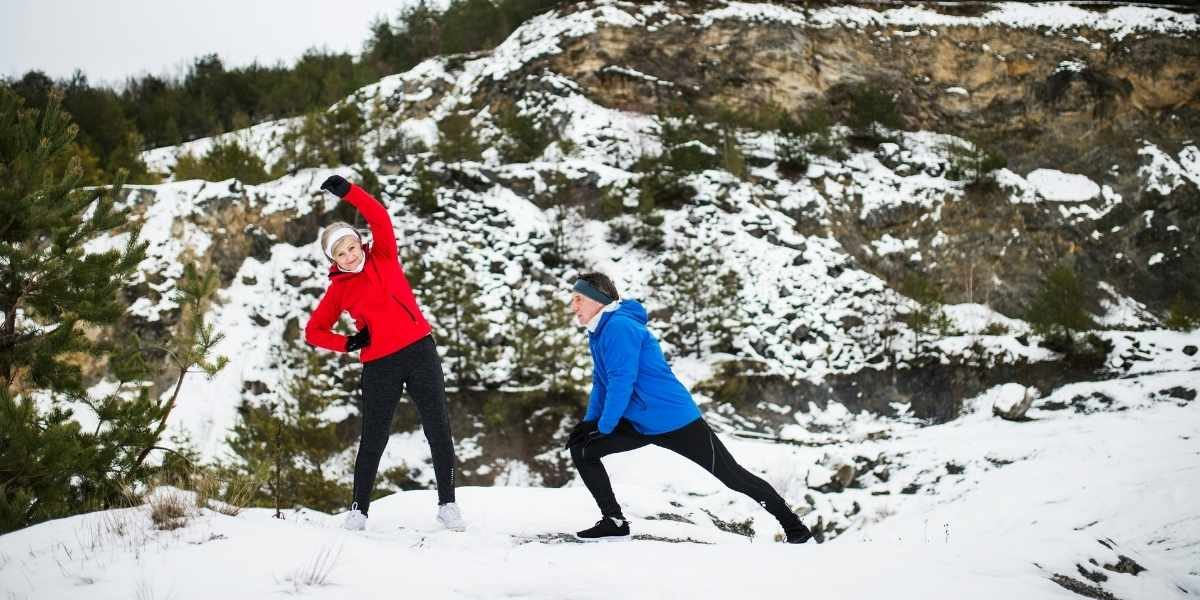Embracing Winter Wellness
As winter rolls in, staying active becomes a challenge for many people. The drop in temperature, shorter days, and the comfort of staying indoors can lead to a decrease in motivation and physical activity. However, maintaining an active lifestyle during the colder months is essential for both physical and mental well-being. This article provides practical strategies, motivational tips, and safety guidelines to help you stay active during the winter season, so you can embrace winter wellness and remain energized.
Read Also: Hair Transplant: Restoring Confidence with Modern Restoration
Combating Seasonal Affective Disorder (SAD)
The shorter days and reduced sunlight during winter can have a profound impact on mood. Many people experience Seasonal Affective Disorder (SAD), a type of depression that is often triggered by the lack of sunlight. Symptoms of SAD include fatigue, low energy, irritability, and difficulty concentrating. Exercise can be a powerful tool in combating these symptoms. Physical activity boosts serotonin levels in the brain, improving mood and reducing feelings of depression. Whether through outdoor activities or indoor workouts, staying active during the winter months can help offset the mood changes associated with reduced sunlight.
Indoor Activity Options
When it’s too cold or snowy to head outside, there are plenty of indoor exercise alternatives to keep your fitness levels in check. Staying active indoors can be just as effective as outdoor exercise, and it offers the comfort of warmth. Here are a few indoor activities to consider:
-
Home Workouts: Set up a space in your living room for bodyweight exercises like squats, lunges, push-ups, and planks. These exercises require no equipment and can be done in short bursts.
-
Gym Routines: If you have access to a gym, consider weight training, cycling, or using cardio machines like the treadmill or elliptical.
-
Yoga and Pilates: These low-impact exercises focus on flexibility, strength, and relaxation, making them a great option for reducing stress and maintaining balance during the winter months.
-
Dance Fitness: Dance-based workouts, like Zumba or hip-hop, are not only fun but also effective for getting your heart rate up and improving cardiovascular health.
-
Virtual Classes: Many fitness instructors now offer online classes, giving you the flexibility to work out at home and try new exercises from the comfort of your own space.
Outdoor Winter Activities (with Safety Considerations)
While winter weather can make outdoor activities seem daunting, there are plenty of enjoyable and energizing outdoor exercises that can be safely enjoyed during the colder months. From winter sports to leisurely outdoor walks, staying active outside is a great way to embrace the season. However, it’s important to take proper precautions to ensure your safety:
-
Snowshoeing and Cross-Country Skiing: These activities provide an excellent full-body workout while allowing you to enjoy the beautiful winter landscape. Make sure to dress in layers, wear appropriate footwear, and be mindful of your surroundings to avoid injury.
-
Ice Skating: A fun and social winter activity, ice skating is a fantastic way to improve balance and coordination while enjoying the winter air.
-
Winter Hiking: With the right footwear and gear, winter hiking can be just as rewarding as hiking in other seasons. Ensure you’re prepared with warm clothing and check trail conditions to avoid icy paths.
Before heading out, it’s essential to layer up with moisture-wicking clothing, a warm jacket, gloves, and a hat to protect against the cold. Always warm up before starting any outdoor activity, and take extra care to avoid slips and falls on icy surfaces.
Motivation and Mindset
Staying motivated to exercise during the winter months can be difficult. The cold weather, combined with the allure of cozy indoor spaces, can make it easy to skip workouts. Here are some strategies to help you stay on track:
-
Set Realistic Goals: Break your fitness goals into small, achievable steps. Celebrate small wins to keep you motivated and focused.
-
Find an Exercise Buddy: Having a workout partner can make exercising more enjoyable and provide accountability. Whether you exercise indoors or outdoors, sharing the experience can boost your commitment.
-
Make It Enjoyable: Choose activities that you truly enjoy. If you find winter sports or home workouts fun, you’ll be more likely to stick with them.
-
Focus on the Benefits: Remind yourself of the mental and physical benefits of staying active. From improving mood to boosting energy levels, exercise can help you feel better and keep you energized throughout the season.
Nutrition for Winter Activity
Staying active in winter requires proper nutrition to fuel your body and keep your immune system strong. Cold weather can put extra stress on your body, so it’s essential to consume nutrient-dense foods that support your energy levels:
-
Nutrient-Rich Foods: Incorporate a variety of fruits, vegetables, lean proteins, and whole grains into your diet to ensure your body has the nutrients it needs to perform at its best.
-
Hydration: It’s easy to forget to drink water during winter since we don’t feel as thirsty as we do in warmer months. However, staying hydrated is just as important in winter to support your energy levels and overall health.
-
Healthy Fats: Include healthy fats from sources like avocados, nuts, and seeds, which can help keep you feeling full and energized for longer periods.
Adapting Exercise Routines
Exercising during colder months may require adjusting your routine to accommodate the weather. Cold temperatures can affect your muscles, so it’s important to adapt your routine to stay safe and avoid injury:
-
Warm-Up and Cool-Down: Take extra time to warm up before exercising and cool down afterward. Cold muscles are more prone to injury, so a proper warm-up will help prepare your body for movement.
-
Modify Intensity: If you’re exercising outside, consider reducing the intensity of your workout to account for the cold. You can always increase the intensity once you’re accustomed to the weather.
Addressing Common Winter Exercise Challenges
Exercising in winter presents its own set of challenges. Here are some solutions to help you overcome common barriers:
-
Dealing with Icy Conditions: If you’re walking or running outside, wear shoes with good grip to avoid slipping on ice. Alternatively, consider using ice grips or cleats for extra traction.
-
Staying Warm: Layer your clothing to retain body heat while allowing moisture to escape. Wear a moisture-wicking base layer, an insulating middle layer, and a waterproof outer layer.
Read Also: Tips and Hacks for Organizing Your Hobby Supplies
-
Overcoming Motivation Barriers: Set a routine, find a workout partner, and remind yourself of the mental benefits of staying active. Even short, low-intensity workouts can have a significant impact on your health.
Staying active during the winter months is essential for both your physical and mental health. Whether you prefer indoor exercises, outdoor winter sports, or a combination of both, there are plenty of options available to help you maintain your fitness routine throughout the colder seasons. With the right mindset, proper nutrition, and safety considerations, you can embrace winter wellness and stay energized all season long.





